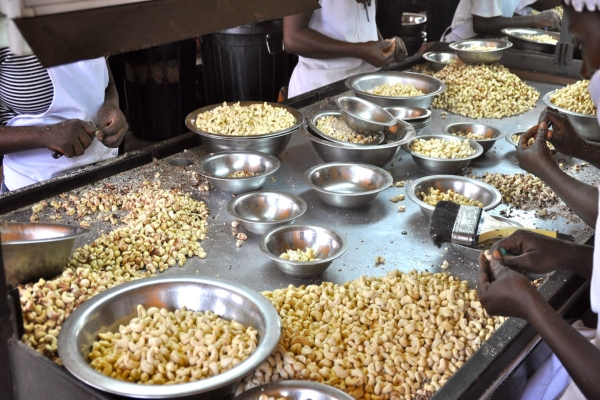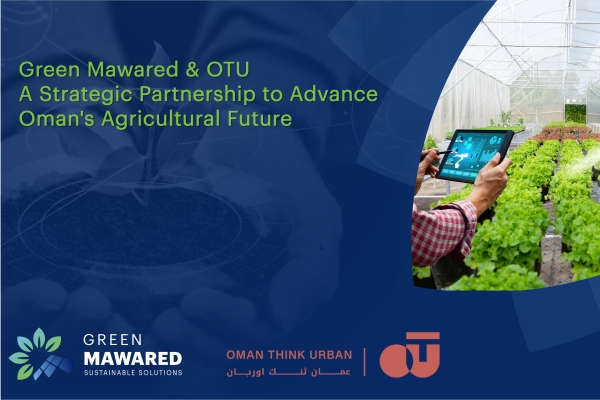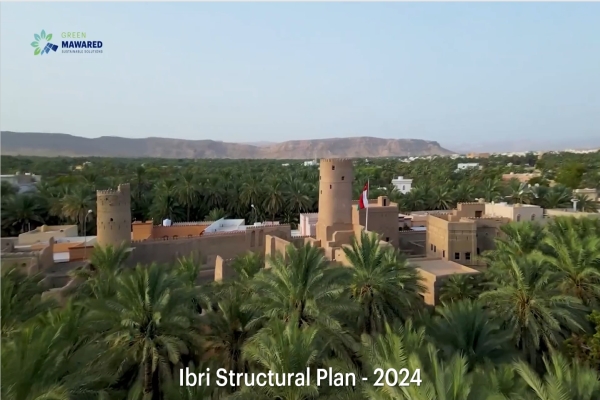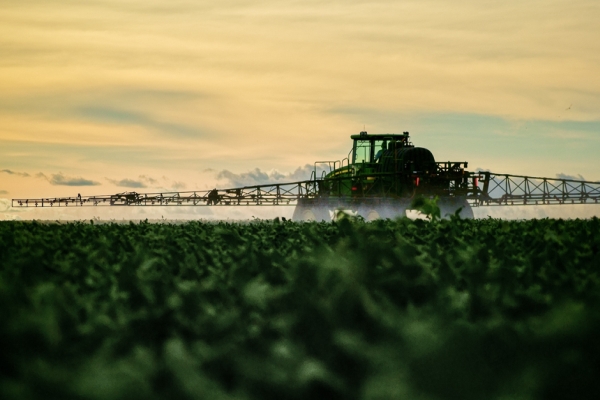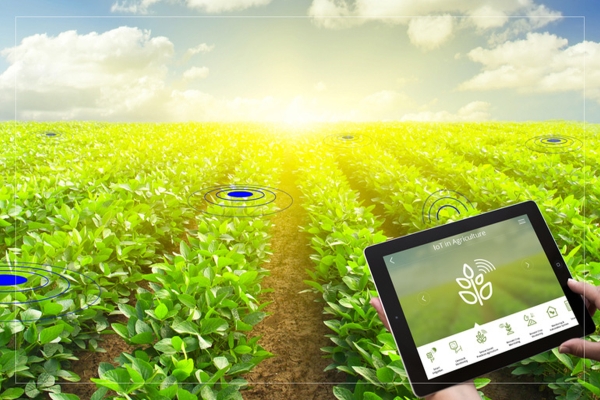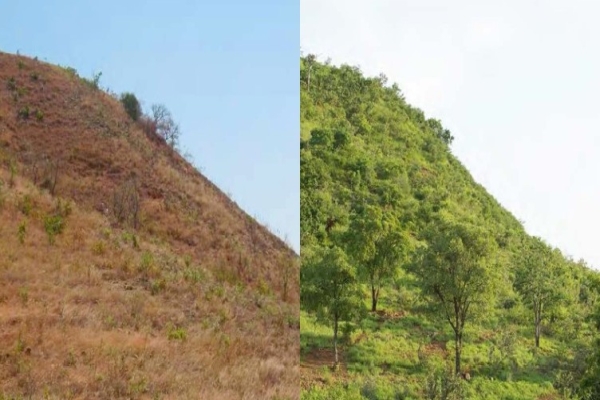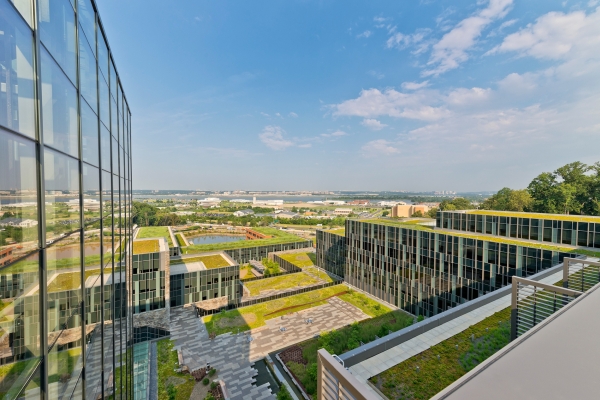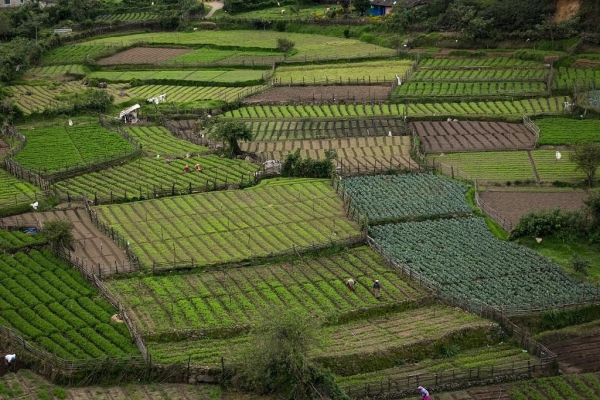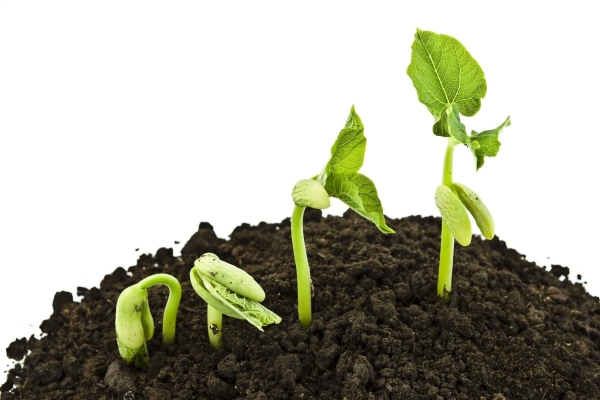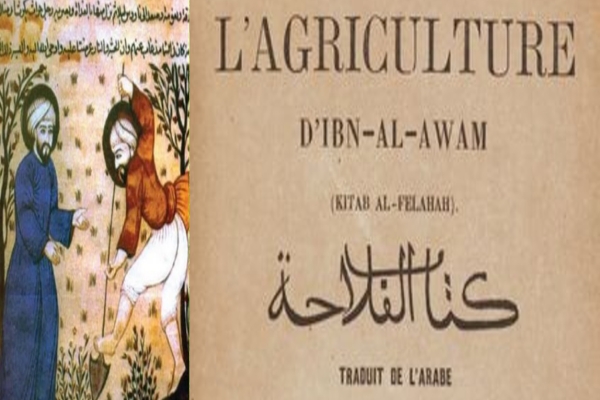Killing the Food Security Golden Goose
- فبراير 13, 2025
- 2 minutes

One of the main pillars of food security is ensuring that farmers receive a good return on investment (ROI) for their work and resources. When farmers struggle financially, it’s not just their livelihood that’s at stake—it has a ripple effect on entire communities and nations. Financially strained farmers may reduce their production or leave agriculture altogether, leading to a decrease in food supply and a weakened food system. Poor farmer profitability directly contributes to deteriorating food security.
A study by the FAO highlights that smallholder farmers, who produce a significant portion of the world’s food, often face financial insecurity due to inadequate support and market access. This financial strain can lead to deteriorating food security, as poor farmers are less able to invest in their farms and produce sufficient yields.
A report from the World Economic Forum emphasizes that while smallholder farmers are essential for global food production, their financial and technological needs are frequently overlooked. This imbalance can lead to situations where farmers are pressured to produce more without receiving adequate compensation, ultimately jeopardizing their livelihoods
The Pitfalls of Maximizing Yield Over Optimal Production
In today’s agricultural landscape, there’s immense pressure on farmers to produce more. Corporations often push for maximum yields to enhance their own profitability, encouraging farmers to adopt intensive farming methods and inputs. However, maximizing yield doesn’t necessarily translate to higher profits for farmers. Agro-economic studies have shown that maximum yield is rarely the most economical choice. Pushing production beyond the optimal rate requires significantly higher inputs—such as synthetic fertilizers, chemical pesticides, and additional labor—which drive up costs. The incremental gains in yield often don’t compensate for these extra expenses, resulting in diminished returns for farmers.
o illustrate this concept further, let’s consider the “Yield vs. Input Cost” chart, which provides a clear visual representation of the relationship between crop yields and the associated input costs. The graph shows four key points (A, B, C, and D) representing different yield percentages and their corresponding costs. As we move from point A (70% yield, cost 6) to point B (80% yield, cost 8), we observe a reasonable increase in yield for a modest rise in cost. However, the relationship becomes less favorable as we progress to point C (90% yield, cost 12) and dramatically worsens at point D (100% yield, cost 20). This clearly demonstrates that achieving the final 10% of yield comes at a disproportionately high cost, potentially eroding farmers’ profits. The optimal yield for a farmer likely lies somewhere between points B and C, where the increase in yield still justifies the additional input costs. This graph underscores the importance of finding the right balance between productivity and profitability, rather than blindly pursuing maximum yields at any cost. It reinforces the idea that regenerative agriculture, which focuses on optimal rather than maximum production, can lead to more sustainable and profitable outcomes for farmers.
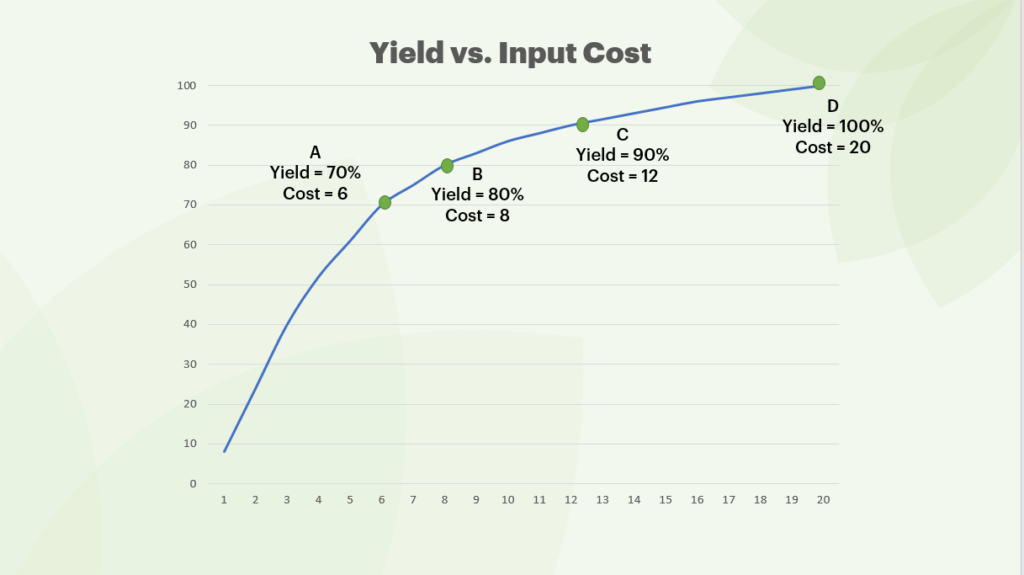
Moreover, reliance on synthetic fertilizers and chemical pesticides not only increases costs but also poses environmental risks. These substances can lead to soil degradation, water pollution, and adverse health effects for both farmers and consumers. The environmental impact can be disastrous, affecting biodiversity and the long-term sustainability of agricultural land.
Embracing Regenerative Agriculture for Sustainable Profitability
Regenerative development is a holistic approach that focuses on revitalizing and renewing entire systems rather than merely sustaining them. In general, it seeks to restore the health and vitality of ecosystems, economies, and communities by working in harmony with natural processes. This approach is intrinsically linked to sustainability because it not only aims to meet present needs but also enhances the capacity of future generations to meet theirs. By prioritizing the regeneration of resources, regenerative development strives for optimal balanced results—achieving economic growth and profitability while simultaneously improving environmental health and social well-being. In agriculture, this means implementing practices that rebuild soil fertility, increase biodiversity, and strengthen the resilience of farming systems, leading to sustainable profitability for farmers and long-term food security.
This approach focuses on restoring soil health, enhancing ecosystem biodiversity, and improving water cycles. By implementing practices such as crop rotation, cover cropping, reduced tillage, and the use of organic fertilizers, regenerative agriculture aims for optimal production rather than maximum yield. These methods reduce dependency on expensive synthetic inputs, thereby lowering operational costs and improving ROI for farmers.
For instance, cover cropping enriches soil naturally, reducing the need for chemical fertilizers. Healthier soil enhances water retention and fosters robust plant growth, which can resist pests and diseases with minimal pesticide use. Over time, farmers maintain stable yields with reduced input costs, leading to better profitability.
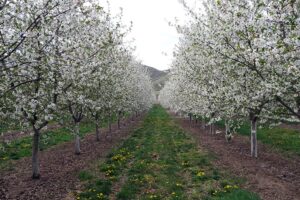
Real-world cases support the benefits of regenerative agriculture. Farmers who have adopted these methods report sustained or increased profits despite not always achieving maximum yields. Lower expenses, coupled with potential premium pricing, enhance their overall income. Furthermore, regenerative agriculture contributes positively to the environment by sequestering carbon in the soil and reducing greenhouse gas emissions. It promotes biodiversity, supports pollinators, and ensures the long-term viability of agricultural land.
Killing the Goose!
Ensuring that farmers receive a fair income is essential for sustainable food security. Pushing farmers to produce maximum yields without proper regard for their well-being and the sustainability of the environment is like killing the golden goose to get the eggs quickly—you end up with no eggs and you lose the goose. This short-sighted approach not only exhausts the farmers and depletes natural resources but also undermines the very foundation of our food systems.
Shifting the focus from maximizing yield to optimizing production through regenerative agriculture benefits farmers, the environment, and society as a whole. By reducing costs and improving soil health, farmers can achieve better profitability while contributing to environmental sustainability. This balanced approach ensures that they can continue to produce food without compromising the land or their livelihoods.
Policymakers, corporations, and consumers all play vital roles in this transition. Policies that support sustainable farming practices, corporate commitments to fair trade and responsible sourcing, and consumer choices favoring sustainably produced foods create an ecosystem where farmers can thrive. By embracing regenerative agriculture and respecting the well-being of farmers and the environment, we can build resilient food systems that provide ample, nutritious food while securing the livelihoods of those who produce it. In doing so, we avoid the pitfalls of seeking immediate gains at the expense of long-term sustainability, ensuring food security for current and future generations.
#SustainableAgriculture #AgricultureEconomy #FoodSecurity #FarmersEmpowerment #ROI #AgricultureInvestment

